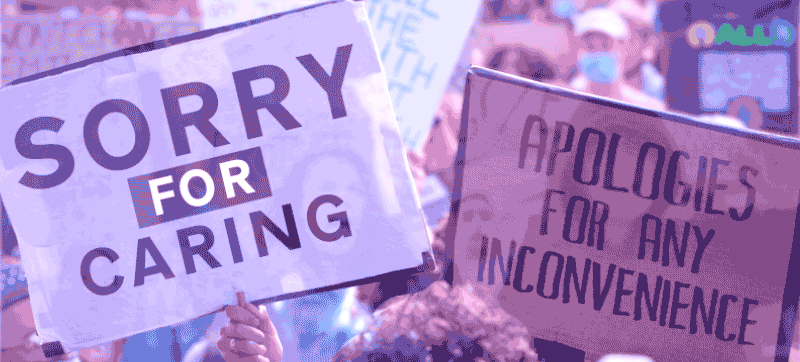An ESG story is fast becoming one of the most important parts of any organisation’s communications toolkit. It needs to be upfront, authentic, informed by strategy and motivated by a desire to make a positive contribution to society as a whole. In this guide, we explain how to create an ESG story that makes people care.
Environmental, Social and Governance ( ESG ) is a framework and formula that helps a business balance its quest for profit against its contribution to its people and broader community, and the planet. It’s a commitment that stretches well beyond the limited and traditional mission of returning value to investors.
We’re fond of a formula. Nerds aside though, it’s hard to feel connected to, or take inspiration, hope or action, from an equation. For that, what you really need is your ESG story.
It could start with a promise, continue with a manifesto and end with a list of accomplishments. There’s lots of ways to tell it. Our main point though is that it can be simply told, easily understood, and offer opportunities for people to engage and share.
Invest in your best ESG story
Do your ESG story right, and it will be an essential element of your communications toolkit. You’ll show that you’re in the business for good camp. It will work hard for you in procurement frameworks, in proposal documents, in investor due diligence, and in recruiting the next generation of talent.
But outlining your commitment to sustainability, social responsibility, and good governance needs to be much more than a statutory obligation.
Get yours right, and your best ESG story will accelerate change within, and inspire action beyond the limits of your company, increasing your chances of meeting and exceeding your goals.
ESG story making is collaborative and circular
If you’ve been tasked with your organisation’s ESG story, you might be feeling a bit intimidated, or even overwhelmed. Our first time around, we definitely did.
So it’s worth remembering that good ESG stories are discovered, not invented. They’re built with facts and insights from a range of perspectives. You’ll gain those by collaborating with experts and stakeholders: by doing the research. One thing you shouldn’t be is lonely.
"An ESG story is discovered, not invented."
Also remember that your ESG story will be born, will grow, will mature, will celebrate anniversaries and accomplishments, like a living thing. You can’t write the 3 year old ESG story in its birth year, let alone the 30, 40 or 50 year old versions (see Patagonia and Yvon Chouinard, below). So set your sights – and others’ expectations – by what you can see, say and do right now.
Accomplishments aren’t endings, just new beginnings. Hold the circular viewpoint: review, reset, revise. That means your definitive ESG story may never be finished.
But here’s how to get it started.
What good looks like
We’ve been engaged to discover and craft a number of ESG stories recently. Our research methodology – Discover – promotes engagement with lots of other experts, as we hinted above.
We’ve boiled our experience down into some key elements that make up an authentic ESG story. Here they are, together with some tips on creating a story that makes people notice and care.
1 More than the sum of its parts
An expert investor who urged us to create a story as “an outward-facing ESG strategy on one page”
An OEM stakeholder (they integrate our client’s technology into their own solutions) with a vision of how each ESG story could reinforce the other
The Chief Technology officer who could tell his children how his business was part of the effort to clean up the world’s oceans.
The stakeholder from the supply chain with a plan to reduce Scope 3 emissions.
The incoming CEO who expressed a desire “To win – but win with integrity.”
Insights like these are invaluable to your ESG story. Make time to discover them – it’ll pay back many times over.
2 Authenticity is everything
The number one attribute of an ESG story is authenticity. An ESG story should reflect your organisation’s genuine commitment to sustainability and social responsibility. Like the environmental benefits of plastic grass vs a wild meadow, audiences can easily spot a story that feels unnatural or inauthentic. Looking fake is worse than saying nothing at all. So it’s important to focus on the genuine actions and commitments that you’re taking.
3 Start with the Why
As with so many winning business stories, when creating an ESG story, it’s a good idea to start with the ‘why’. Why is sustainability or social responsibility important to your organisation? What motivated you to take action in these areas? Start with your why, to create a narrative that makes people care.
Being able to paint a picture of how your ESG story started will make it feel more real and relatable. Think of Patagonia’s Yvon Chouinard, back in the 1960s, scaling the sheer Californian rock faces. The recognition that his climbing equipment was damaging the environment was the seed that turned into trailblazing outdoor adventure brand Patagonia. Share the why behind your sustainability program, and you can create a story that is meaningful and engaging.
Not every business will have such a dramatic lightbulb moment, and that’s okay, as long as the story is real. Maybe your why is driven by your team. Maybe you’ve surveyed staff and they’ve told you that they want to be working for a business that’s doing good in the world. Maybe they’ve revealed that they’re concerned about your impact on the environment. Perhaps the ideas are coming from your newest recruits, and they’re driving the change. Those insights and that determination to change can be your Patagonia moment, right there. Document it, and start the journey from here.
4 Actions speak louder than words
As well as starting with your why, it’s important to focus on the concrete actions that you’re taking to address sustainability or social responsibility. Rather than simply talking about your company’s values or commitments, share the specific steps you’re taking to make a difference. Real small actions have more impact than big vague promises. One of our client’s investors summed it up recently in one of our Discover interviews:
"Go out with commendable achievements rather than radical statements."
For example, if your company is committed to promoting diversity and inclusion, don’t just share a statement about your commitment. Show how you’re switching up the boardroom and changing your recruitment practices. Share specific actions that your company is taking, such as kickstarting a mentorship program for underrepresented employees or partnering with organisations that promote diversity in the workplace. Real stories of new hires, promotions, partnerships that reflect your commitment to diversity and inclusion are commendable achievements. By sharing concrete actions, you can demonstrate that your company is serious about making a difference.
5 Data, benchmarking and transparency
Dates, data and metrics have a pivotal part to play in your ESG story. Saying you’re serious about reducing your carbon footprint is one thing. Demonstrating exactly how, by what measures and by what amount is another, and that’s what you want to aim for. But be realistic too. In ESG year 1, there’s a good chance you won’t have everything you’d ideally need. Aim to evidence your direction of travel, which is a meaningful step beyond a simple promise.
You can also evidence your commitment by publishing your benchmarks. This can be nuanced. For the Social metrics that matter to you, it may be more meaningful to benchmark against the communities you serve, rather than the industry you represent.
Transparency matters. If a measurement or benchmark is relevant, go to it. If it’s a tough one – Scope 3 emissions, say – then it’s a tough one. Say what you know and what you don’t. Say how you’ll come to know, and when you aim to know by. And then keep people posted. Transparency is simply a part of good governance.
6 Explore all of your talking points
Don’t stop asking interesting questions and starting conversations:
What impact has flexible working had on your carbon footprint now that there are fewer trips to the office? How much waste has been diverted from landfill now that you’ve ditched plastic packaging? What’s improved since you started recycling? Has peer support improved representation in the workplace?
ESG demands long term change and creativity. Talking points like these help highlight the impact of all the measures. They show you’re open to new thinking and new conversations. And they keep your own people engaged and energised.
Drawing your ESG story together
Those are the key elements, and it’s still a lot. You can further simplify your task if you aim for the first version of the story to be a simple ‘manifesto for change’.
Why we want to change – What we want to change – How we make change happen – Repeat
Why we want to reduce direct emissions – What we want to change, from and to, and by when – How we’ll do that
Why we want a greater representation of BAME employees – What are our benchmarks and aims – How we’ll do that
…and so on
The manifesto is a list of meaningful and measurable commitments that’s resonant with your values and beliefs. It’s simple to tell and share. And though it should evolve with time, it will always have its own place in your storytelling.
Good luck. And shout if you need help. Our first thoughts will cost you nothing.






What do you think?